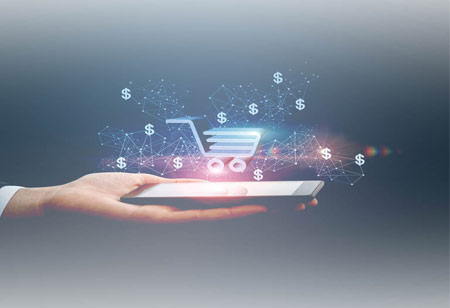THANK YOU FOR SUBSCRIBING
THANK YOU FOR SUBSCRIBING

By
Logistics Transportation Review | Monday, May 06, 2024
Stay ahead of the industry with exclusive feature stories on the top companies, expert insights and the latest news delivered straight to your inbox. Subscribe today.
Last-mile delivery's future is promising due to consumer demands, innovation, and sustainability in the logistics industry as it evolves faster, smarter, and greener.
FREMONT, CA: Last-mile delivery has a bright and promising future. Businesses adopting these trends can push innovation and sustainability in the logistics sector while simultaneously satisfying consumers' ever-increasing demands. The last mile will keep changing in the future, becoming quicker, wiser, and more environmentally friendly.
The final link in the logistical network, the last mile of delivery, is changing. As e-commerce grows, businesses seek creative ways to distribute goods more quickly, effectively, and sustainably.
Autonomous Delivery Vehicles
Self-driving cars and drones are no longer concepts; they are becoming realities. Autonomous delivery vehicles can navigate through traffic and deliver packages without human intervention, reducing delivery times and costs.
Electric Vehicles (EVs)
Electric cars are increasingly favored for last-mile deliveries due to the push for sustainability. Compared to conventional delivery vehicles, they offer cheaper running expenses and reduce carbon emissions.
Advanced Tracking Systems
Consumers demand visibility into their delivery journey. Advanced tracking systems provide real-time updates and precise delivery windows, improving customer satisfaction and trust.
Micro-Fulfillment Centers
Companies are setting up micro-fulfillment centers in urban areas to bring products closer to consumers. These smaller warehouses are located within the delivery radius, significantly reducing delivery times.
Crowdsourced Delivery
The gig economy is impacting last-mile delivery. Platforms that crowdsource delivery to local drivers can quickly scale up to meet demand peaks without needing a large fleet of vehicles.
Smart Lockers and PUDO Points
Smart lockers and pick-up/drop-off (PUDO) points offer flexibility for consumers who cannot be home to receive deliveries. These secure locations allow for 24/7 package pick-up and returns.
AI and Machine Learning
AI and machine learning are optimizing operations and delivery routes. By analyzing large volumes of data, these technologies can estimate the fastest routes and foresee any delays.
Sustainable Packaging
Sustainable packaging is gaining importance as customers grow more aware of environmental issues. Reusable and biodegradable packaging options are being investigated to cut down on trash.
Robotics and Automation
Robots and automated systems are streamlining warehouse sorting and loading processes, speeding up the preparation for last-mile delivery.
Personalized Delivery Experiences
Companies offer personalized delivery options, such as scheduled delivery times, in-home delivery, and white-glove services for high-value items.
Integration with Smart Home Technologies
Delivery services are integrating with smart home technologies to enable secure in-home delivery. For example, smart locks can grant delivery personnel one-time access to leave packages inside the home.
Subscription-Based Delivery Models
Subscription-based delivery models are gaining popularity. Consumers can opt for regular delivery schedules for frequently purchased items, ensuring they always stay supplied.
Collaborative Delivery Networks
Businesses are forming collaborative networks to share delivery resources. This approach reduces costs and increases delivery efficiency by pooling orders from multiple companies.
I agree We use cookies on this website to enhance your user experience. By clicking any link on this page you are giving your consent for us to set cookies. More info





